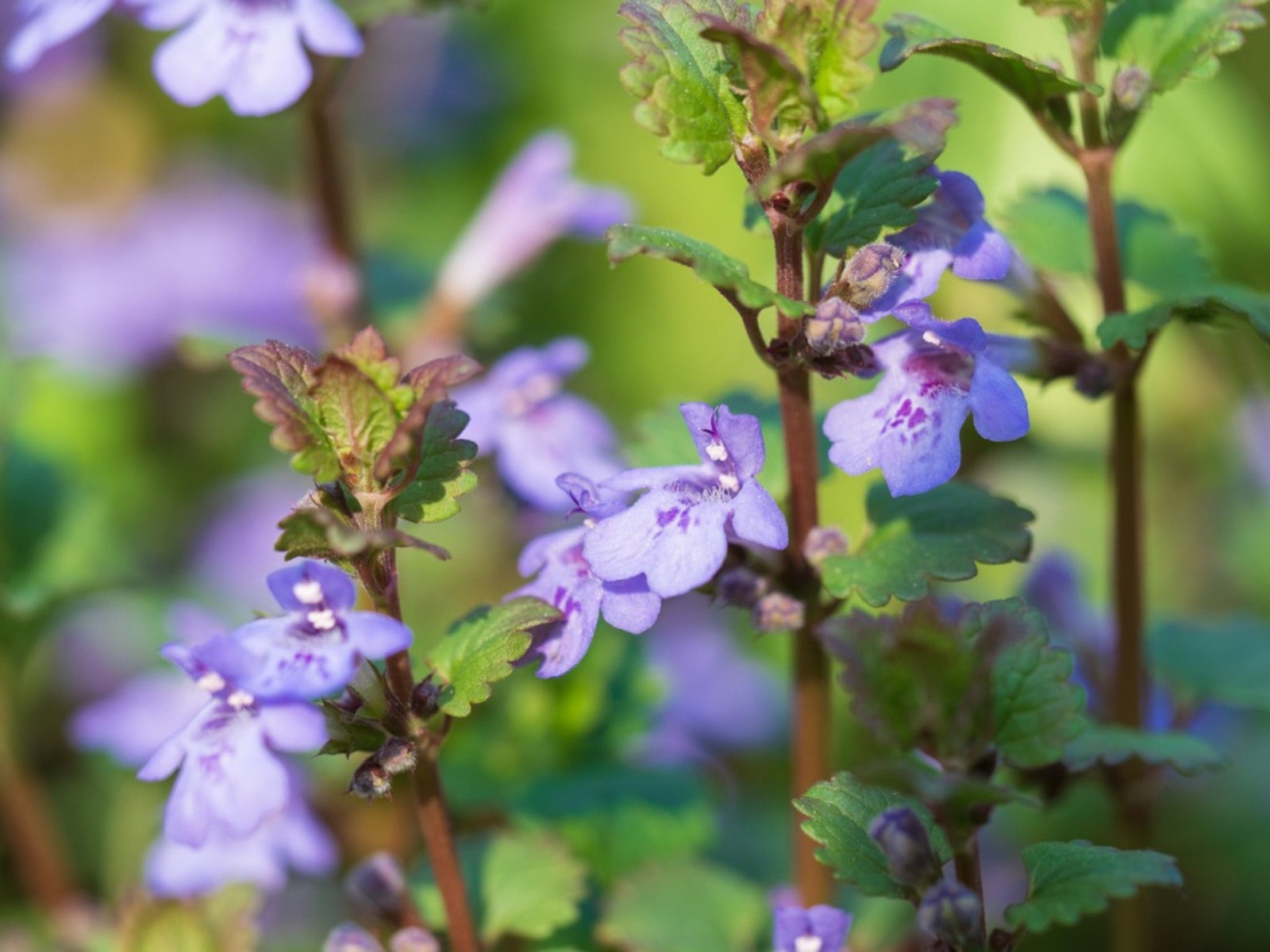How To Kill Creeping Charlie Plant


Successfully killing creeping charlie is the dream of many homeowners who like a nice lawn. The creeping charlie plant is rivaled only by dandelions in terms of difficulty to eliminate and control. If you know a few tips and tricks about how to get rid of creeping charlie, you can beat this annoying lawn invader.
Identifying Creeping Charlie Weed
Creeping charlie (Glechoma hederacea) is often called ground ivy due to its appearance and growth habits. Creeping charlie weed is a green vine whose leaves are round with scalloped edges. Creeping charlie has a small purple flower. The creeping charlie plant is most easily identified by its growth habit. It is a vine that grows close to the ground and will form a mat-like ground cover if allowed to. The vines have nodes at each of the places where leaves grow and these nodes will form roots if they come in contact with the soil. This is part of the reason that creeping charlie weed is so frustrating, as you cannot simply pull it up. Every rooted node can turn into a new plant if left behind.
How to Kill Creeping Charlie Plant
The first thing to understand when working to get rid of creeping charlie plant is that it, like most lawn weeds, thrives best in an unhealthy lawn. Be sure to use proper mowing, watering, and fertilizing practices when caring for your lawn. While creeping charlie weed is considered a broadleaf weed, it is not affected by all broadleaf spectrum herbicides. The only weed killers that are successful at killing creeping charlie are weed killers that contain dicamba. Even dicamba is only successful if applied several times at the right time. In order to kill creeping charlie, you must apply dicamba based herbicide to your lawn in early fall when creeping charlie plant is growing most actively, which will leave it weakened enough so that it will have a difficult time surviving the winter. You can also apply in the late spring to early summer, but late spring to early summer applications will stall rather than eradicate creeping charlie in your lawn. Also, only apply dicamba herbicide 3 days after mowing and do not mow for 3 days after applying it. This will allow the creeping charlie to grow more leaves, which will cause it to take in more herbicide and then will allow time for the herbicide to work through the plant's system. You can get rid of creeping charlie in flower beds by either hand pulling (after rain or watering works best) or with smothering techniques, either using several layers of newspaper or a thick application of mulch, or even both together. After taking steps to control creeping charlie in your flower beds, keep a close eye out for it to reappear. Immediately remove any small creeping charlie plants that appear. While many sources recommend Borax to kill creeping charlie, understand that this method can also easily kill your other plants as well. Not only that but using Borax to get rid of creeping charlie often does not work. It is best to avoid using Borax for killing creeping charlie. Note: Any recommendations pertaining to the use of chemicals are for informational purposes only. Chemical control should only be used as a last resort, as organic approaches are safer and more environmentally friendly.
Gardening tips, videos, info and more delivered right to your inbox!
Sign up for the Gardening Know How newsletter today and receive a free copy of our e-book "How to Grow Delicious Tomatoes".

Heather Rhoades founded Gardening Know How in 2007. She holds degrees from Cleveland State University and Northern Kentucky University. She is an avid gardener with a passion for community, and is a recipient of the Master Gardeners of Ohio Lifetime Achievement Award.
-
 4 Superfast Composting Methods: Turn Waste Into Garden Gold In 30 Days Or Less
4 Superfast Composting Methods: Turn Waste Into Garden Gold In 30 Days Or LessTry the fastest composting methods to turbocharge your pile and transform kitchen scraps and garden waste into finished compost in just a few weeks.
By Mary Ellen Ellis
-
 Best Spider Plant Soil – Complete Soil Guide And Expert Tips For Keeping Plants Happy
Best Spider Plant Soil – Complete Soil Guide And Expert Tips For Keeping Plants HappySpider plants are fun and easy plants to grow, but what is the best soil for a spider plant? Selecting the right soil is important so they can thrive.
By Bonnie L. Grant